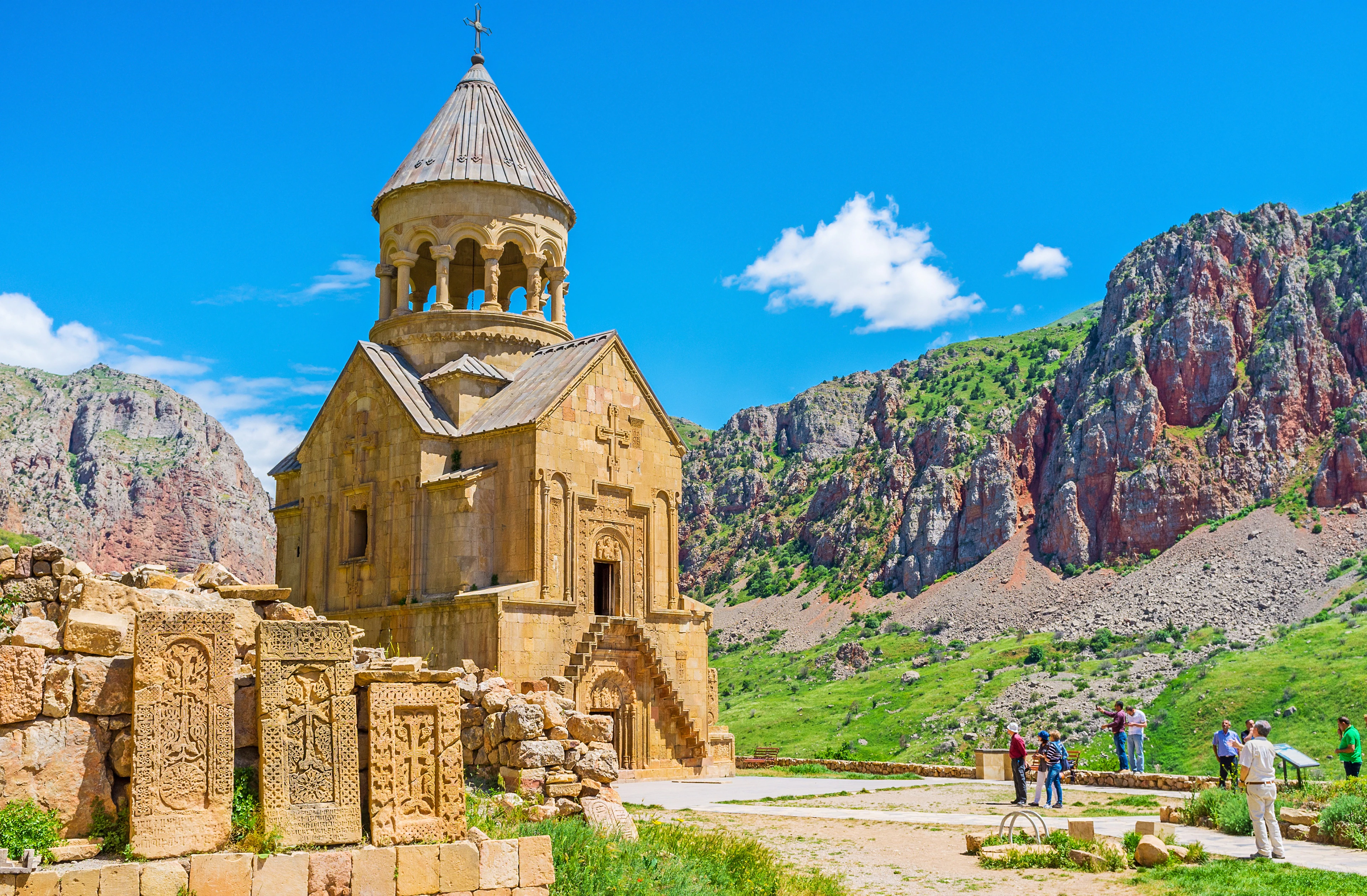



Yeghegnadzor is a town and urban municipal community in southern Armenia, serving as the provincial capital of Vayots Dzor Province and the Yeghegnadzor Municipality. It is located at a road distance of 123 km south of the capital Yerevan, on the shores of Srkghonk River, at a height of 1,194 meters above sea level. Wikipedia
April to October: Ideal for hiking, sightseeing, and visiting wineries.
September is harvest season — great for grape-picking, wine tastings, and food festivals.
Winters are cold but quiet, best for cozy retreats and snow-dusted scenery.
By car: About 2.5–3 hours from Yerevan via the M2 highway.
Marshrutkas run daily from Yerevan’s Southern Bus Station — frequent and inexpensive.
The drive passes through gorgeous mountain scenery and river valleys.
Noravank Monastery: A spectacular 13th-century monastery built into red rock cliffs in the Amaghu Gorge — a must-visit near town.
Old Bridge Winery: A family-run vineyard offering tastings, tours, and local hospitality.
Yeghegnadzor Regional Museum: Showcases the history and archaeology of Vayots Dzor.
Spitakavor Monastery: A remote and peaceful 14th-century site, reachable by off-road trail or hike.
Gladzor University Ruins: Once one of Armenia’s great medieval centers of learning.
Explore Noravank Monastery and hike the surrounding gorge for breathtaking views.
Visit wineries and enjoy local wine tastings, often paired with homemade food.
Hike or drive to Spitakavor for a peaceful mountain escape.
Walk the town’s streets and interact with locals — especially in the central square and market.
Try seasonal fruit-picking in nearby orchards — apricots, grapes, or apples.
Guesthouses and boutique hotels are common — run by locals and usually include meals.
Some winery stays offer a full vineyard experience with tastings and tours.
Quiet, clean, and surrounded by nature — perfect for couples, solo travelers, or slow travel.
Yeghegnadzor is wine country — home to Areni grapes, used in many award-winning Armenian reds.
Local dishes include:
Khorovats (barbecue), tolma, and lavash wraps
Cheese platters, dried fruits, and herb salads
Guesthouses and wineries often serve home-cooked meals — organic, hearty, and rich in flavor.
Don’t miss Armenian fruit vodkas (oghi) and local honey.
The region is deeply tied to wine-making, religion, and scholarly tradition.
Locals are proud of their vineyards and monasteries, and warmly welcome visitors.
Folk songs, regional dialects, and agricultural festivals are still strong in village life.
The area's past includes medieval education centers, caravan routes, and ancient settlements.
Bring layers — even in summer, evenings can be cool.
Good walking shoes are useful for monastery paths and trails.
Plan monastery and winery visits in advance, especially in harvest season.
Cash is helpful, though some larger places accept cards.